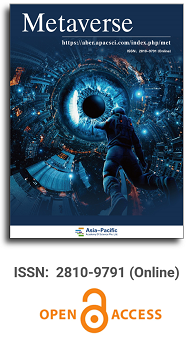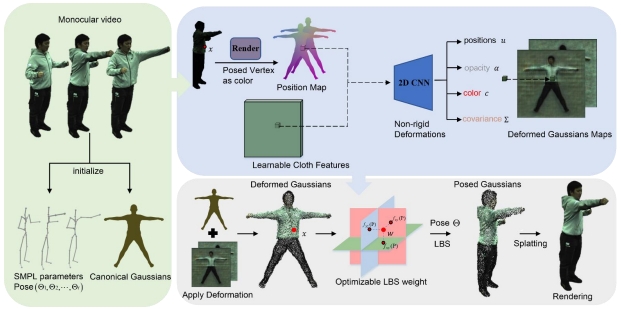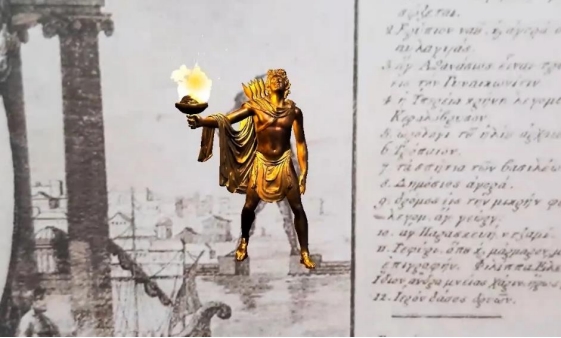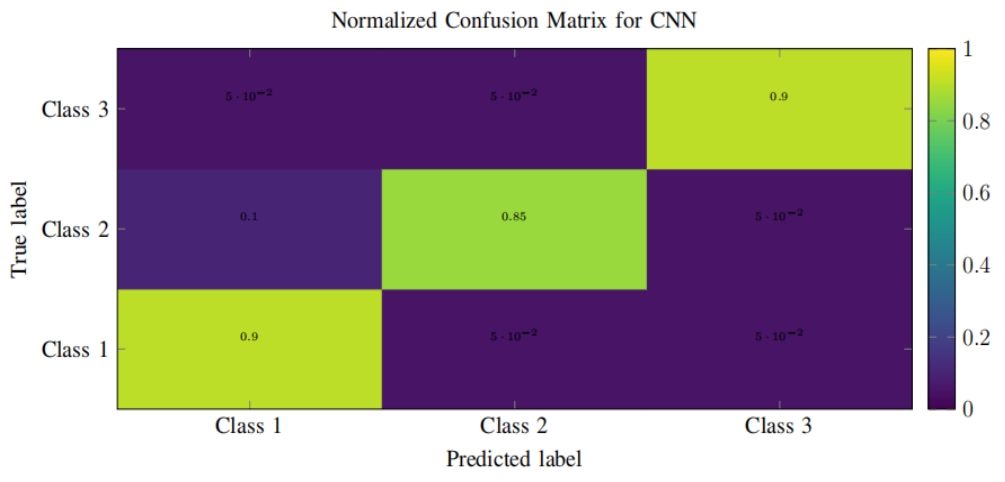
Asia Pacific Academy of Science Pte. Ltd. (APACSCI) specializes in international journal publishing. APACSCI adopts the open access publishing model and provides an important communication bridge for academic groups whose interest fields include engineering, technology, medicine, computer, mathematics, agriculture and forestry, and environment.



Integration of IoT, fog, and cloud in a blockchain network for future smart cities
Vol 6, Issue 2, 2025
Download PDF
Abstract
In recent times, the concept of smart cities has gained traction as a means to enhance the utilization of urban resources, delivering sustainable services across sectors like energy, transportation, healthcare, and education. Applications for smart cities leverage information and communication technologies (ICT), particularly the Internet of Things (IoT), cloud computing, and fog computing. By merging these technologies with platforms like the metaverse, cities can improve service delivery and create more engaging experiences for residents. The metaverse, in this context, serves as a virtual space for interactions between citizens and city authorities, contributing positively to urban planning and management. Nonetheless, data security and privacy remain significant challenges for smart cities implementing these technologies. To address this, blockchain-based security solutions can be effective in supporting sustainable smart city applications. By integrating IoT, fog computing, and cloud services into a blockchain framework, it’s possible to establish a secure and advanced platform for the creation and deployment of applications aimed at sustainable urban development. This paper proposes a conceptual model that combines IoT, fog, and cloud technologies within a blockchain structure, enabling smart city applications to harness the strengths of each technology, thereby optimizing operations, improving service quality, and ensuring robust security.
Keywords
References
1. Datta A. New urban utopias of postcolonial India. Dialogues in Human Geography. 2015; 5(1): 3-22. doi: 10.1177/2043820614565748
2. Bibri SE, Krogstie J. Smart sustainable cities of the future: An extensive interdisciplinary literature review. Sustainable Cities and Society. 2017; 31: 183-212. doi: 10.1016/j.scs.2017.02.016
3. Bonomi F, Milito R, Zhu J, et al. Fog computing and its role in the internet of things. In: Proceedings of the first edition of the MCC workshop on Mobile cloud computing; 2012; ACM: New York, NY, USA. pp. 13–16.
4. Dutta J, Roy S. IoT-fog-cloud based architecture for smart city: Prototype of a smart building. In: Proceedings of the 2017 7th International Conference on Cloud Computing, Data Science & Engineering—Confluence. pp. 237–242.
5. Ahmed I, Zhang Y, Jeon G, et al. A blockchain‐ and artificial intelligence‐enabled smart IoT framework for sustainable city. International Journal of Intelligent Systems. 2022; 37(9): 6493-6507. doi: 10.1002/int.22852
6. Zhang C. Design and application of fog computing and Internet of Things service platform for smart city. Future Generation Computer Systems. 2020; 112: 630-640. doi: 10.1016/j.future.2020.06.016
7. Songhorabadi M, Rahimi M, MoghadamFarid A, et al. Fog computing approaches in IoT-enabled smart cities. Journal of Network and Computer Applications. 2023; 211: 103557. doi: 10.1016/j.jnca.2022.103557
8. Escamilla-Ambrosio PJ, Rodríguez-Mota A, Aguirre-Anaya E, et al. Distributing computing in the internet of things: cloud, fog and edge computing overview. In: NEO 2016: Results of the Numerical and Evolutionary Optimization Workshop NEO 2016 and the NEO Cities 2016 Workshop. Springer International Publishing; 2018. pp. 87-115.
9. Mohamed N, Al-Jaroodi J, Jawhar I. Towards Fault Tolerant Fog Computing for IoT-Based Smart City Applications. In: Proceedings of the 2019 IEEE 9th Annual Computing and Communication Workshop and Conference (CCWC). pp. 0752-0757.
10. Khanna A, Sah A, Bolshev V, et al. Blockchain–Cloud Integration: A Survey. Sensors. 2022; 22(14): 5238. doi: 10.3390/s22145238
11. Roy M, Singh M, Radhakrishnan B. Blockchain Scalability: Solutions, Challenges and Future Possibilities. In: Proceedings of the International Conference on Signal & Data Processing; 2022. pp. 133-149.
12. Al Nuaimi E, Al Neyadi H, Mohamed N, et al. Applications of big data to smart cities. Journal of Internet Services and Applications. 2015; 6(1). doi: 10.1186/s13174-015-0041-5
13. Tang B, Chen Z, Hefferman G, et al. A Hierarchical Distributed Fog Computing Architecture for Big Data Analysis in Smart Cities. In: Proceedings of the ASE BigData & SocialInformatics 2015; 7–9 October 2015; Kaohsiung, Taiwan. p. 28.
14. Al-Jaroodi J, Mohamed N. PsCPS: A Distributed Platform for Cloud and Fog Integrated Smart Cyber-Physical Systems. IEEE Access. 2018; 6: 41432-41449. doi: 10.1109/access.2018.2856509
15. Mohamed N, Al-Jaroodi J, Jawhar I, et al. UAVFog: A UAV-based fog computing for Internet of Things. In: Proceedings of the 2017 IEEE SmartWorld, Ubiquitous Intelligence & Computing, Advanced & Trusted Computed, Scalable Computing & Communications, Cloud & Big Data Computing, Internet of People and Smart City Innovation (SmartWorld/SCALCOM/UIC/ATC/CBDCom/IOP/SCI); 4–8 August 2017; San Francisco, CA, USA. pp. 1758–1765.
16. Mohamed N, Al-Jaroodi J, Lazarova-Molnar S, et al. Applications of Integrated IoT-Fog-Cloud Systems to Smart Cities: A Survey. Electronics. 2021; 10(23): 2918. doi: 10.3390/electronics10232918
17. Javed AR, Shahzad F, Rehman S ur, et al. Future smart cities: requirements, emerging technologies, applications, challenges, and future aspects. Cities. 2022; 129: 103794. doi: 10.1016/j.cities.2022.103794
18. Malik S, Gupta K. Smart City: A new phase of sustainable development using fog computing and IoT. IOP Conference Series: Materials Science and Engineering. 2021; 1022(1): 012093. doi: 10.1088/1757-899x/1022/1/012093
19. Orejon-Sanchez RD, Crespo-Garcia D, Andres-Diaz JR, et al. Smart cities’ development in Spain: A comparison of technical and social indicators with reference to European cities. Sustainable Cities and Society. 2022; 81: 103828. doi: 10.1016/j.scs.2022.103828
20. Pati A, Parhi M, Alnabhan M, et al. An IoT-Fog-Cloud Integrated Framework for Real-Time Remote Cardiovascular Disease Diagnosis. Informatics. 2023; 10(1): 21. doi: 10.3390/informatics10010021
21. Gharaibeh A, Salahuddin MA, Hussini SJ, et al. Smart Cities: A Survey on Data Management, Security, and Enabling Technologies. IEEE Communications Surveys & Tutorials. 2017; 19(4): 2456-2501. doi: 10.1109/comst.2017.2736886
22. Jawhar I, Mohamed N, Al-Jaroodi J. Networking architectures and protocols for smart city systems. Journal of Internet Services and Applications. 2018; 9(1). doi: 10.1186/s13174-018-0097-0
23. Rashid B, Rehmani MH. Applications of wireless sensor networks for urban areas: A survey. Journal of Network and Computer Applications. 2016; 60: 192-219. doi: 10.1016/j.jnca.2015.09.008
24. Arasteh H, Hosseinnezhad V, Loia V, et al. Iot-based smart cities: A survey. In: Proceedings of the 2016 IEEE 16th International Conference on Environment and Electrical Engineering (EEEIC); 7–10 June 2016; Florence, Italy. pp. 1–6.
25. Zanella A, Bui N, Castellani A, et al. Internet of Things for Smart Cities. IEEE Internet of Things Journal. 2014; 1(1): 22-32. doi: 10.1109/jiot.2014.2306328
26. Jin J, Gubbi J, Marusic S, et al. An Information Framework for Creating a Smart City Through Internet of Things. IEEE Internet of Things Journal. 2014; 1(2): 112-121. doi: 10.1109/jiot.2013.2296516
27. Tang B, Chen Z, Hefferman G, et al. Incorporating Intelligence in Fog Computing for Big Data Analysis in Smart Cities. IEEE Transactions on Industrial Informatics. 2017; 13(5): 2140-2150. doi: 10.1109/tii.2017.2679740
28. He J, Wei J, Chen K, et al. Multitier Fog Computing with Large-Scale IoT Data Analytics for Smart Cities. IEEE Internet of Things Journal. 2018; 5(2): 677-686. doi: 10.1109/jiot.2017.2724845
29. Javadzadeh G, Rahmani AM. Fog Computing Applications in Smart Cities: A Systematic Survey. Wireless Networks. 2019; 26(2): 1433-1457. doi: 10.1007/s11276-019-02208-y
30. Mahmud R, Ramamohanarao K, Buyya R. Application Management in Fog Computing Environments. ACM Computing Surveys. 2020; 53(4): 1-43. doi: 10.1145/3403955 31. Perera C, Qin Y, Estrella JC, et al. Fog Computing for Sustainable Smart Cities. ACM Computing Surveys. 2017; 50(3): 1-43. doi: 10.1145/3057266
32. Zahmatkesh H, Al-Turjman F. Fog computing for sustainable smart cities in the IoT era: Caching techniques and enabling technologies - an overview. Sustainable Cities and Society. 2020; 59: 102139. doi: 10.1016/j.scs.2020.102139
33. Naha RK, Garg S, Georgakopoulos D, et al. Fog Computing: Survey of Trends, Architectures, Requirements, and Research Directions. IEEE Access. 2018; 6: 47980-48009. doi: 10.1109/access.2018.2866491
34. Mukherjee M, Shu L, Wang D. Survey of Fog Computing: Fundamental, Network Applications, and Research Challenges. IEEE Communications Surveys & Tutorials. 2018; 20(3): 1826-1857. doi: 10.1109/comst.2018.2814571
35. Mouradian C, Naboulsi D, Yangui S, et al. A Comprehensive Survey on Fog Computing: State-of-the-Art and Research Challenges. IEEE Communications Surveys & Tutorials. 2018; 20(1): 416-464. doi: 10.1109/comst.2017.2771153
36. Dizdarević J, Carpio F, Jukan A, et al. A Survey of Communication Protocols for Internet of Things and Related Challenges of Fog and Cloud Computing Integration. ACM Computing Surveys. 2019; 51(6): 1-29. doi: 10.1145/3292674
37. Bittencourt L, Immich R, Sakellariou R, et al. The Internet of Things, Fog and Cloud continuum: Integration and challenges. Internet of Things. 2018; 3-4: 134-155. doi: 10.1016/j.iot.2018.09.005
38. Sikorski JJ, Haughton J, Kraft M. Blockchain technology in the chemical industry: Machine-to-machine electricity market. Applied Energy. 2017; 195: 234-246. doi: 10.1016/j.apenergy.2017.03.039
39. Wattenhofer R. The science of the blockchain. Inverted Forest Publishing; 2016.
40. Danzi P, Angjelichinoski M, Stefanovic C, et al. Distributed proportional-fairness control in microgrids via blockchain smart contracts. In: Proceedings of the 2017 IEEE International Conference on Smart Grid Communications (SmartGridComm). pp. 45-51.
41. Mengelkamp E, Gärttner J, Rock K, et al. Designing microgrid energy markets. Applied Energy. 2018; 210: 870-880. doi: 10.1016/j.apenergy.2017.06.054
42. Arslan-Ayaydin Ö, Shrestha P, Thewissen J. Blockchain as a Technology Backbone for an Open Energy Market. In: Regulations in the Energy Industry. Springer, Cham; 2020. pp. 65-84.
43. Li J, Shen X, Chen L, et al. Service Migration in Fog Computing Enabled Cellular Networks to Support Real-Time Vehicular Communications. IEEE Access. 2019; 7: 13704-13714. doi: 10.1109/access.2019.2893571
44. Qayyum T, Trabelsi Z, Malik AW, et al. Multi-Level Resource Sharing Framework Using Collaborative Fog Environment for Smart Cities. IEEE Access. 2021; 9: 21859-21869. doi: 10.1109/access.2021.3054420
45. Whaiduzzaman M, Barros A, Chanda M, et al. A Review of Emerging Technologies for IoT-Based Smart Cities. Sensors. 2022; 22(23): 9271. doi: 10.3390/s22239271
46. Xie J, Tang H, Huang T, et al. A Survey of Blockchain Technology Applied to Smart Cities: Research Issues and Challenges. IEEE Communications Surveys & Tutorials. 2019; 21(3): 2794-2830. doi: 10.1109/comst.2019.2899617
47. Deshpande A, Stewart K, Lepetit L, Gunashekar S. Distributed Ledger Technologies/Blockchain: Challenges, opportunities and the prospects for standards. Overv. Rep. Br. Stand. Inst. 2017; 40: 40.
48. Zetzsche DA, Buckley RP, Arner DW. The Distributed Liability of Distributed Ledgers: Legal Risks of Blockchain. SSRN Electronic Journal. Published online 2017. doi: 10.2139/ssrn.3018214
49. Nasir MH, Arshad J, Khan MM, et al. Scalable blockchains—A systematic review. Future Generation Computer Systems. 2022; 126: 136-162. doi: 10.1016/j.future.2021.07.035 50. Kaur G, Gandhi C. Scalability in Blockchain: Challenges and Solutions. Handbook of Research on Blockchain Technology. Academic Press; 2020. pp. 373-406.
Supporting Agencies
Copyright (c) 2025 Author(s)
License URL: https://creativecommons.org/licenses/by/4.0/

This site is licensed under a Creative Commons Attribution 4.0 International License (CC BY 4.0).

Prof. Zhigeng Pan
Professor, Hangzhou International Innovation Institute (H3I), Beihang University, China

Prof. Jianrong Tan
Academician, Chinese Academy of Engineering, China
Conference Time
December 15-18, 2025
Conference Venue
Hong Kong Convention and Exhibition Center (HKCEC)
...
Metaverse Scientist Forum No.3 was successfully held on April 22, 2025, from 19:00 to 20:30 (Beijing Time)...
We received the Scopus notification on April 19th, confirming that the journal has been successfully indexed by Scopus...
We are pleased to announce that we have updated the requirements for manuscript figures in the submission guidelines. Manuscripts submitted after April 15, 2025 are required to strictly adhere to the change. These updates are aimed at ensuring the highest quality of visual content in our publications and enhancing the overall readability and impact of your research. For more details, please find it in sumissions...






.jpg)
.jpg)

